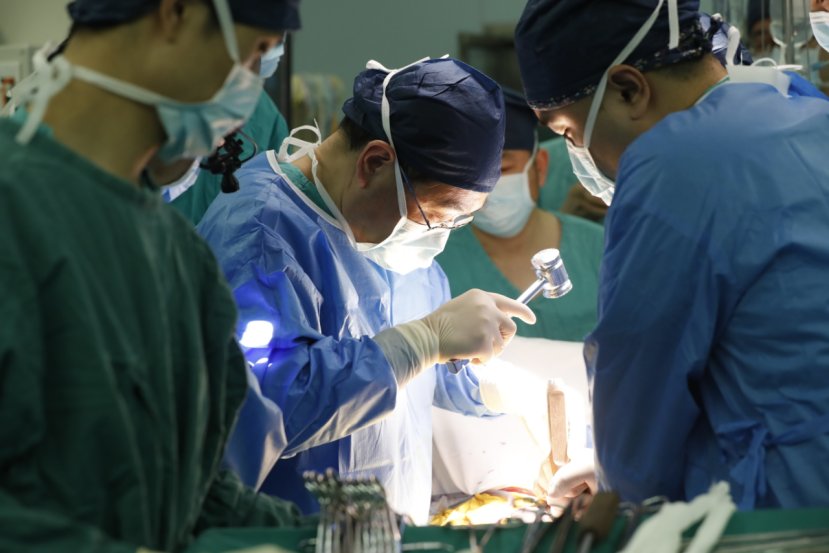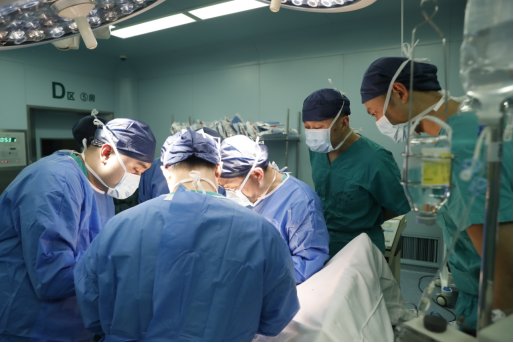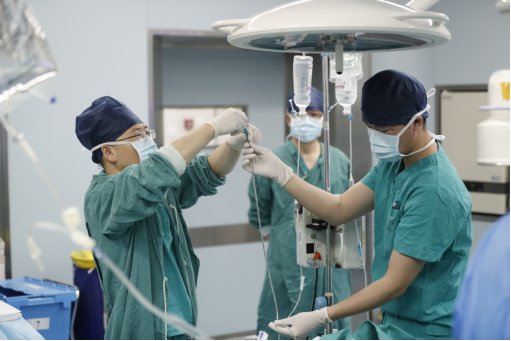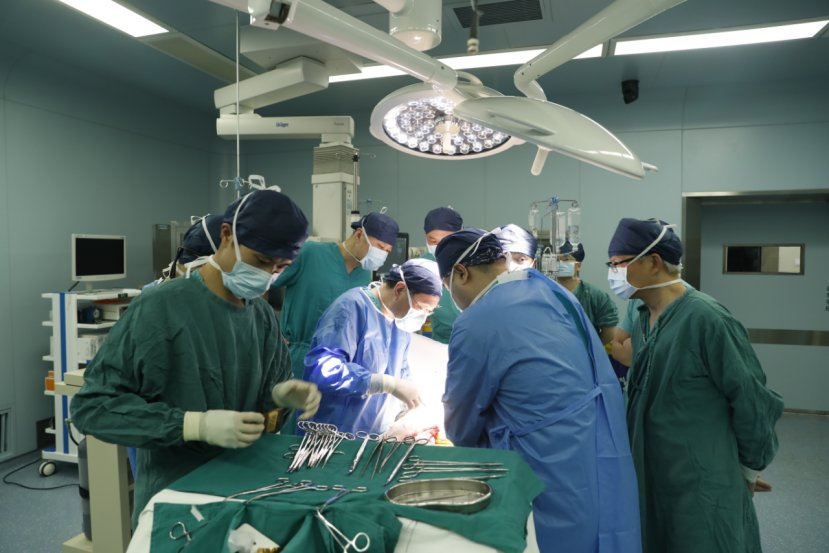Cao Xi and Zhu Yaqing of the Third Affiliated Hospital of Naval Military Medical University
February 22, 2022, the 22nd day of the first lunar month, Tuesday, the most loving and special day, the naval military doctor With the joint efforts and close cooperation of multiple disciplines in the Anting Campus of the Third Affiliated Hospital of the University, a very difficult surgical resection and reconstruction of the sacral recurrent tumor has been successfully completed…

Recently, Aunt Liu (pseudonym), an elderly patient who recurred after resection of a sacral tumor (chordoma), was admitted to the Orthopedics Department of the Third Affiliated Hospital of Naval Military Medical University, Anting Campus. Aunt Liu is 66 years old this year. She went to many local hospitals to no avail. After many inquiries, she came to Shanghai and found Professor Wang Zhiwei, director of the Orthopedics Department of the Anting Campus of the Third Hospital of the Military University.
“My mother had an operation more than 10 years ago, probably in 2011, and this time it relapsed.” Liu Aqiu’s daughter told reporters. “We had a checkup in a big hospital in our hometown, and the recurrence was worse than last time. The doctor suggested us to operate, but the risk was too high, and the doctor was not sure, so we came to Shanghai to seek medical treatment.”
Sacral tumor surgery has a lot of bleeding, deep location, and difficult operation. The surgical treatment of recurrent sacral tumor is even more difficult. It often requires the cooperation of multiple disciplines in the hospital, and requires a high level of technology and a strong hospital integration. Strength can complete this complex operation.

“This patient’s treatment involved multidisciplinary consultations, because her condition was complex, the chordoma recurred, and She is accompanied by severe hypertension and osteoporosis. In addition, she has mild anemia, and the operation has certain risks.” Director Wang Zhiwei said.
The difficulty of this operation is self-evident. On February 22, the operation lasted nearly 10 hours. Sun Yuming, director of the Department of Anesthesiology, introduced: Intraoperative hemorrhage, first supine position and then prone position, long operation time, and intraoperative coagulation dysfunction are all great challenges for anesthesia. After the joint efforts of many departments such as the Third Hospital of the Military University and its brother units, under the strong guarantee of the operating room and blood transfusion department, and under the concerted efforts of experts and professors in orthopedics, urology, vascular surgery, plastic surgery and anesthesiology, The operation was successfully completed. After the operation, the patient’s condition was stable, and he was transferred to the intensive care unit, where the medical experts continued to provide protection to help the patient survive the relatively dangerous 24 hours after the operation.

When Aunt Liu was sent out of the operating room, the time had already pointed to the early morning of February 23. Aunt Liu’s bed doctor, Dr. Pan Yubo, said: “The operation went well.” During the operation, Aunt Liu’s family members had been wandering outside the door of the operating room with worries written all over their faces. When they learned that the operation was successful, everyone breathed a sigh of relief.
During this process, the reporter deeply felt that the emotions and trust between people have not been diluted by the new crown epidemic. Everyone is doing what they can and working hard for life and work!
Aunt Liu will still face the risk of postoperative infection in the next time, and there will be a long-term postoperative recovery problem. Aunt Liu provides high-quality service, let us cheer for her silently!

Sacral tumors are rare tumors, and primary tumors are even rarer. Chordoma is the most common pathological type of sacral primary tumor, followed by giant cell tumor of bone and neurogenic tumor of sacrum. Surgery is the main treatment for sacral tumors. Due to the complex anatomical structure of the sacrum and its proximity to major blood vessels and important organs, intraoperative bleeding is turbulent and the surgical risk is high. Since it is difficult to achieve wide margins of resection in the sacrum, the local recurrence rate after sacral tumor surgery is also high. The surgical treatment of sacral tumors has always been one of the difficult problems in the field of surgical treatment of bone and soft tissue tumors.
Intraoperative bleeding is an unavoidable problem in the surgical treatment of sacral tumors. Due to the complex anatomical structure of the sacrum, the amount of intraoperative blood loss is often excessive, which will lead to unclear surgical field, difficult complete tumor resection, and hemorrhagic shock due to massive blood loss, which will eventually lead to perioperative mortality, intraoperative and intraoperative mortality. The postoperative complication rate and tumor local recurrence rate increased, which significantly affected the safety and efficacy of surgery. With the gradual maturity of radiological intervention methods, preoperative selective arterial embolization has also been widely used to reduce intraoperative bleeding in sacral tumors. Preoperative selective arterial embolization can effectively reduce the amount of intraoperative blood loss, and can cause necrosis inside the tumor, slightly reduce the mass, and facilitate complete tumor resection.
Experts remind: If you feel pain in the sacrococcygeal region, or have neurological symptoms in the lower limbs, or have bowel and bladder dysfunction, you should not only consider the disease of lumbar disc herniation, but the most important thing is to seek medical treatment in an orthopedic specialist in time. rule out the disease.